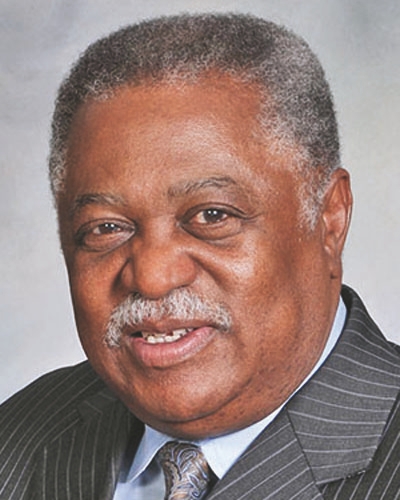 He’d reached his destination. Never had he seen a building so tall in person, only in Life magazine and fancy picture books.
He’d reached his destination. Never had he seen a building so tall in person, only in Life magazine and fancy picture books.
But here he was in blistering November donning a slightly tattered but clean as the board of health wool top coat and armed with a leather suitcase that looked as if it had been nicked up in a fight with boxing champ Jack Johnson. A few of his fellow passengers —black folk from Alabama, Georgia, Louisiana, Mississippi and both Carolinas—were greeted by family and friends. A couple of railcars down was the Rev. Robert Bradby, pastor of Second Baptist Church, welcoming a woman and her three children. About 200 feet away from that huddle stood John Dancy, the debonair and dutiful leader of the Detroit Urban League.
“People would come to this community and not know a soul and Dancy would greet them at the train station,” said N. Charles Anderson, Urban League of Southeastern Michigan president and CEO. “John Dancy and his staff would get them something to eat, a place to stay for the night and help them assimilate into the Detroit community.”
The Urban League of Detroit and Southeastern Michigan turns 100 next year and Anderson points out that the venerable organization will carry out several events to celebrate the occasion. They include a luncheon next month on December 5 that will recognize Ed Deeb, formerly of the Michigan Food and Beverages Association and AT&T Michigan. During that program, it will honor about 100 children and present to them “Do the Right Thing” awards. The agency will also host its signature event, the annual Distinguished Warriors dinner, in March 2016.
BEGINNINGS
On November 4, 1915, Eugene Knickle Jones was sent to Detroit by the National Urban League (NUL) to study the city’s growing black community. Jones observed that while 1,000 blacks a month were moving to the Motor City in hopes of steadier work and a better way of life, there were many obstacles that prevented both from happening, which included racial discrimination and a lack of education and job training.
NUL officials tapped Forrester B. Washington to open a branch in Detroit on June 5, 1916. Since that time, the institution has been a leader in providing human service assistance to African Americans. Its leaders have included Francis Kornegay, Roy Levy Williams, Donald Woods, the Rev. Ronald Griffin and Anderson. Dancy served between 1918 and 1960. With the exception of the three years he served as human services director for the City of Detroit during the Dennis W. Archer administration, Anderson has led the agency since 1987.
“The core values of the agency were established by John Dancy,” Anderson proclaimed. The agency has focused on workforce development over the years and under Dr. Kornegay’s leadership the first black bank teller in Detroit was hired. “He opened doors up and got African Americans into places where they had not been,” Anderson added.

REFLECTION
The agency hopes to create a reunion event for Camp Green Pastures participants. It also wants to hear from people who’ve had wedding receptions, sweet 16 parties and other events at the organization’s Mack Avenue headquarters, the stately former home of renowned architect Albert Kahn. Kahn donated the building to the Urban League in 1942. Anderson believes that Motown Records legend Diana Ross attended parties in the home during her childhood and that a young Lionel Richie participated in the camp during a summer stay with Detroit-area relatives.
Anderson is proud of the work that the direct service agency has carried out with youth and the expansion of its Women, Infant and Children nutrition and wellness programs. He also wants to lead an effort to maintain and restore its headquarters.
“The NAACP breaks down the door,” Anderson declared. “The Urban League walks in.”
For more information call the Detroit Urban League at (313) 832-4600.